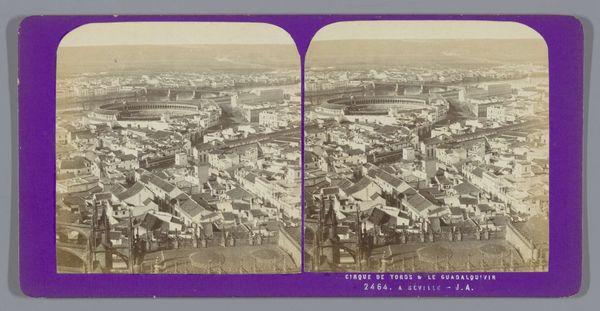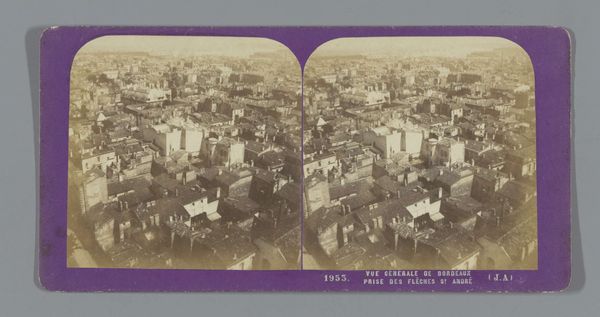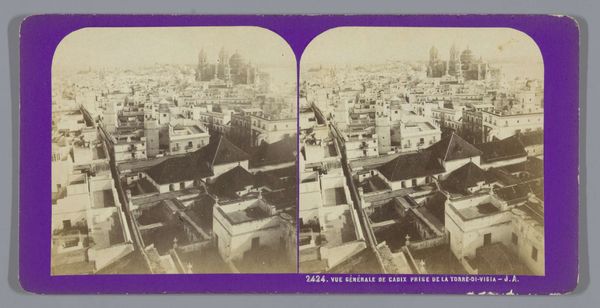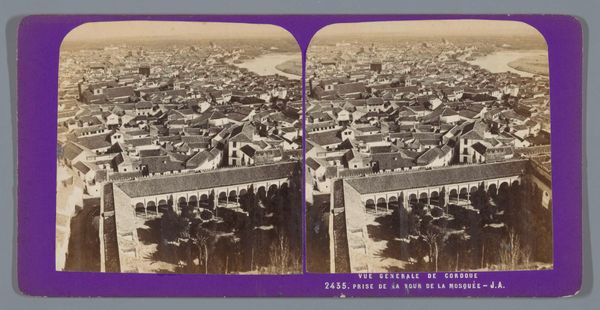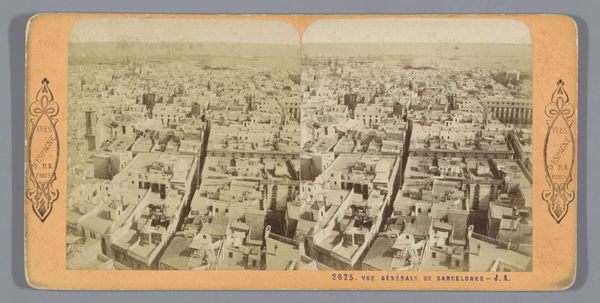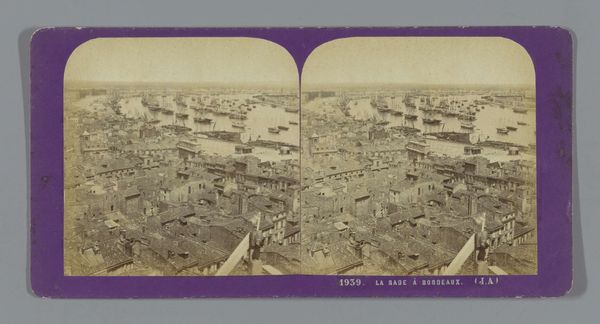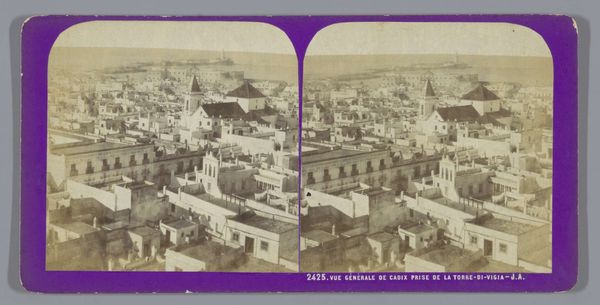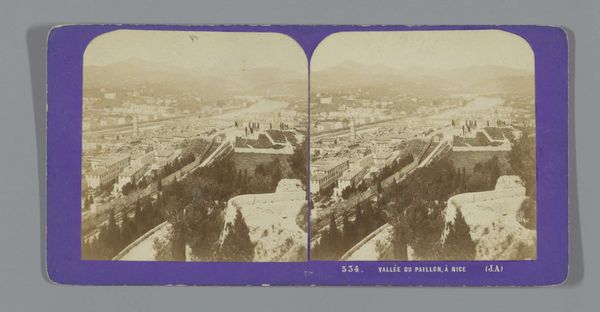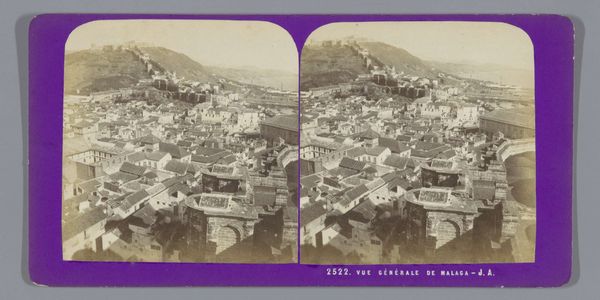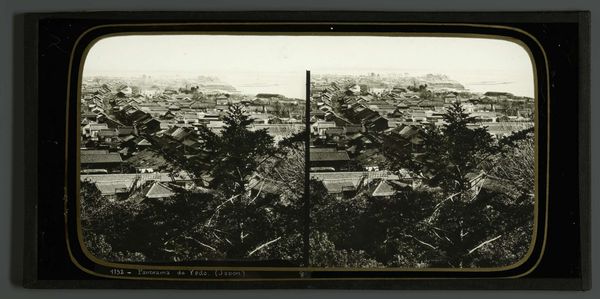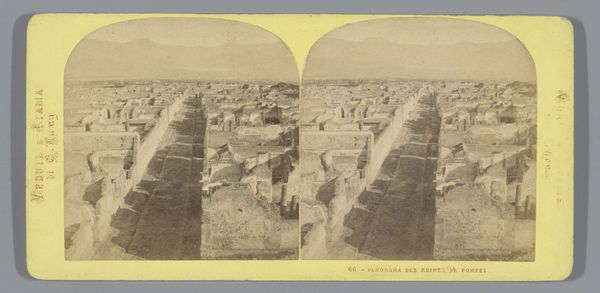
photography, gelatin-silver-print
#
landscape
#
photography
#
gelatin-silver-print
#
cityscape
#
realism
Dimensions: height 85 mm, width 170 mm
Copyright: Rijks Museum: Open Domain
Editor: So this is “View of Seville from the Giralda,” taken by Jean Andrieu between 1862 and 1876. It's a gelatin silver print, and the detail is incredible! I'm struck by the sheer density of the urban landscape. How do you interpret this work, especially considering its historical context? Curator: This photograph, beyond being a simple cityscape, provides a fascinating glimpse into 19th-century urbanism and its colonial undertones. The elevated perspective, taken from the Giralda, which was once a minaret and later a bell tower, inherently asserts a position of power and observation. Who had access to this viewpoint and whose stories were not included in the captured narrative? Editor: That’s interesting, I hadn’t thought about the perspective itself holding power. Curator: Think about how photography was evolving then. It wasn't just about capturing an image; it was about documenting and, in some ways, claiming territory. Seville, with its layers of Islamic and Christian history, becomes a site where different cultures and power structures intersect. Consider who the image was made for, likely European audiences keen to consume romanticized or orientalist views of Spain. The rooftops below almost become a canvas reflecting socio-political dynamics of that time. Does that shift your reading of the image? Editor: Absolutely! Now I see how this isn't just a picture of a city, but a statement about looking at a city. Curator: Precisely. Understanding the historical gaze helps us to deconstruct what appears as a neutral representation and see the complexities embedded within the image itself. It allows us to question whose perspective dominates and whose stories are being marginalized. Editor: That really brings a new dimension to analyzing even what seems like a straightforward landscape photograph. Thank you.
Comments
No comments
Be the first to comment and join the conversation on the ultimate creative platform.
